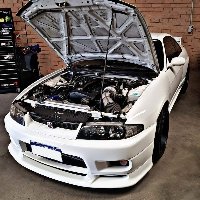Squish Pads And Rb26 Heads
Announcements
-
Similar Content
-
Latest Posts
-
careful when running the car after a boil over. Ive heard you can lose enough coolant that it won't show the right temps because of too much air in the system (or something like that). Make sure the levels are good before trying again. Maybe a mobile mechanic can come have a look with their scan tool ?
-
OK, just for some extra clarity - there is more than one option at Frenchy's. 1. You can buy the whole kit - with or without the actual compressor. The whole kit includes mounts, hoses, condensor, etc. That's either ~$2200 or ~$2800. No surgery required with this option. 2. You can buy just the bracket (~$600), or the bracket with the compressor (~$1200). Either of this or the above option "without the compressor" is if you already have an Echo comp or you are able to source one locally. Whatever the case, in this option, you will need surgery done on your hoses to adapt to the new compressor. When I said "the Frenchy's kit", I meant the whole kit in option 1. It is obviously somewhat more $$ than a $1500 OEM compressor. But if I had to spend $1500 on an OEM compressor, I would certainly consider spending double that to renew and significantly update everything forward of the firewall. Another option is to rebuild your original compressor. My R34 comp is currently dead and I will be most likely doing that to it if the spare one in the shed is also leaky.
-
I’m thinking that’s the route I’ll go, thanks for the input!
-
Hey all, my 2004 Nissan Skyline 350GT overheated the other day with coolant boiling and leaking out of the coolant reservoir when I was parking. So today, I started it up again just to see if it was a thermostat/head gasket issue. After about 20 mins of running, temps were normal again, no coolant was leaking out and the upper reservoir hose was warm but my engine suddenly cut off. I checked the oil dipstick and cap when it was running and there was no white foamy residue and the exhaust did not have white smoke. I tried starting up the car again but it would only crank, similar to when I had a camshaft sensor issue just that now there’s no check engine light on the dash. Any ideas? Unfortunately I don’t have an OBD2 that can read the Nissan's programme.
-
By Papichulo96 · Posted
Bump on this to not make another post, had a ‘head drain’ leak on me and have the engine out as we speak. Planning on just putting a new freeze plug back in , plug the tapped holes and just be done with that headache. Now I still want to relieve pressure to allow oil to pass down the blocks returns easier. I’ve seen catch cans with multiple vents help folks with this issue on this forum. I’m wanting to make my own. I have some pictures here of my setup if anyone can help how I should plumb and design the catch can I would deeply appreciate it ! rb25 Oil upgrades: 1.0mm restrictor n1 pump/billet gears extended crank collar extended sump with trap doors/w welded fitting
-






Recommended Posts
Create an account or sign in to comment
You need to be a member in order to leave a comment
Create an account
Sign up for a new account in our community. It's easy!
Register a new accountSign in
Already have an account? Sign in here.
Sign In Now